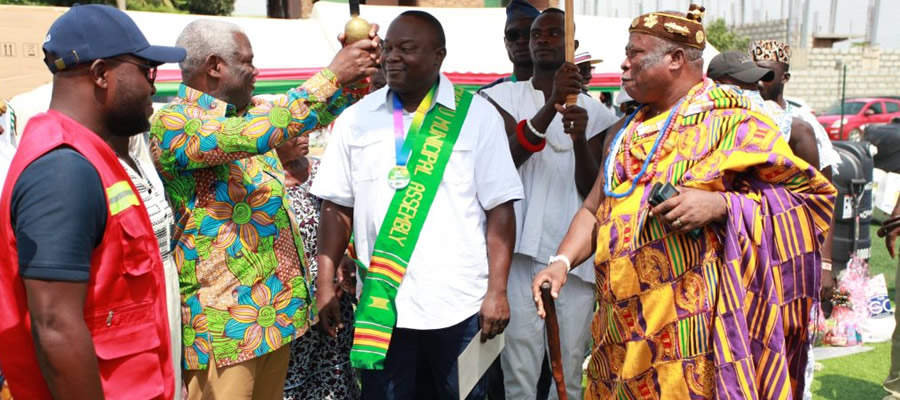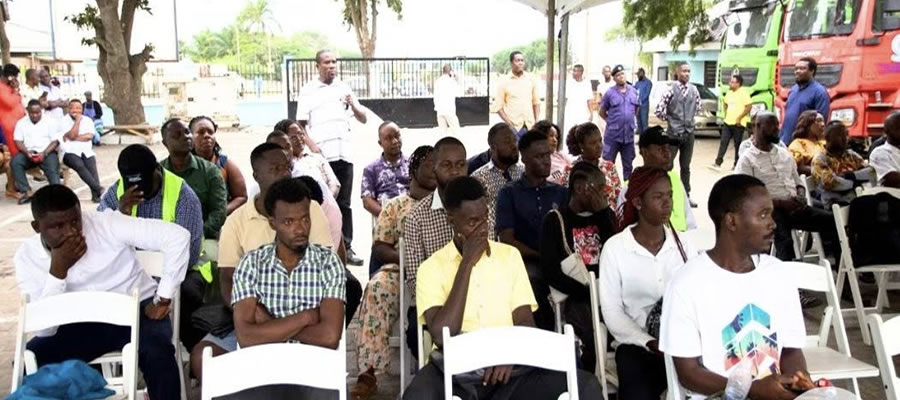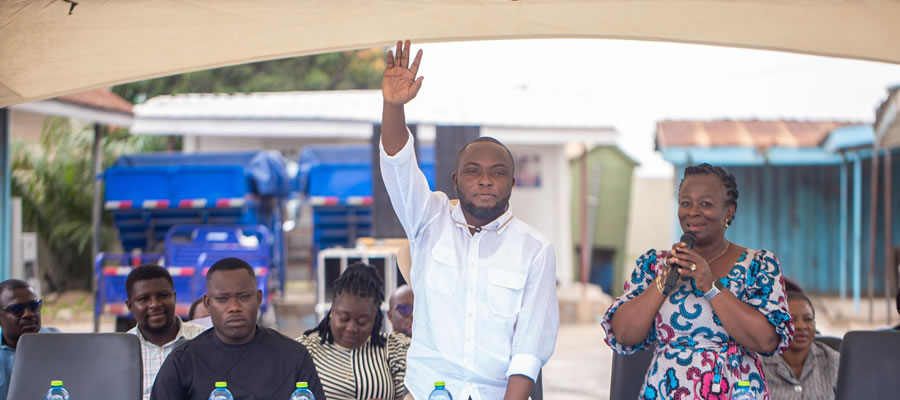

Vulnerability
Poverty Issues
The Urban Poor
The Municipality generally has an urban character and any meaningful discussion on poverty issues in Ledzokuku Municipal should first determine who constitutes the urban poor. Existing literature reveals that there are three main categories of poverty in any urban setting.
Firstly urban poverty can be manifested at the level of the household within a community and in this case the indicators for measuring the level of poverty may include densely populated dilapidated buildings, inadequate household facilities and overstretched community infrastructure, epidemics, social vices, poor sanitation to mention few. Typical examples of such areas are Teshie and Nungua Old Towns. This category of urban poverty constitutes the main focus of intervention in many poverty reduction programmes.
There is also the second group who may not necessarily be poor financially but experience deficiencies of a communal nature in their communities which have a ‘causal relationship with poverty’ (Tackie 1995). Examples of such deficiencies, usually found in middle income areas and some high income areas, include inadequate security, poor water supply, poor drainage and road conditions etc.
The third category of urban poor are those that are affected by poverty singly or at the level of the nuclear family although they reside in communities that are not normally categorised as poor. Such groups such as house helps, squatters etc would manifest their individual poverty, financially, although they reside in affluent neighbourhoods. This group is also found scattered in commercial areas of the Municipality.
It is therefore clear that any discussion on urban poverty should appreciate the spatial dimensions of these three categories and the complex interrelations that exist between and among them within the urban setting. Unique and pragmatic interventions are therefore required to be designed to suit each poverty category to ensure that desired impact are felt.
Poverty Indicators
Indicators such as income levels, efficiency of solid waste management system, access to water, room occupancy, nature of access to toilet facilities, housing typology, housing density and population density are the indicators identified to measure the extent of poverty in the Municipality. The table below shows the poverty situation in some selected neighbourhoods in Ledzokuku Municipality.
Causes of Poverty and Coping Mechanisms
Poverty has causes that are diverse and complex and include laziness, attitudes of the people towards work, poor management of scarce but available resources, seasonal unemployment, large family sizes, and lack of skill training among others. To survive in a complex and challenging urban setting such as the Ledzokuku Municipality the poor may adapt to cope with their vulnerable conditions, some of which are legal and accepted by the society. Petty trading and multiple employments are legal coping mechanisms adopted to ensure sustainable livelihoods. There are however other illegal means such as prostitution, armed robbery, gambling etc that may be used as a means of survival. However, it is envisaged that any poverty reduction programme should incorporate skill training, provision of seed capital, flexibility in loan system, interventions by NGO’s, CBO’s etc.
Tentative Poverty Pockets
The tentative pockets in the municipality are discussed here based on the three categorizations of poverty already discussed. Category 1 of Urban Poverty: Indigenous areas (Nungua and Teshie Old Towns)
Nungua Old Town
Information collected from documentations of the World Bank Sponsored Urban Six Project implemented in Nungua Old Town reveals that the settlement is one of the oldest Ga Fishing communities along the coast of the Greater Accra Region and has experienced a lot of growth in population due to its proximity to both Accra and Tema. The community has also experienced invasion and succession of micro enterprises due to high turn- overs and the growth in population has however not been compensated for in terms of provision of socio economic and technical infrastructure. A situation that has led to the emergence of serious problems especially in the water sector.
The predominant occupation in the area is manufacturing, which engages about 33.2% of the labour force. After Manufacturing is trading, which accounts for 25.3%. On the whole, the economic dependency ratio of Nungua Old Town is 1:1.97 which implies that an employed person looks after about 2 persons who are either unemployed or economically inactive.
There area has 1774 males as against 1439 females. This puts the sex ratio at 123:100 which indicates the predominance of males over females. Survey data for the Urban Six Project further showed that about 49.9% of respondents were aged 0-19 years, about 46% for those aged 20-64 years and 3.3% for those above 64 years. This fairly youthful population is a potential that could be harnessed to implement projects and thereby decrease poverty in the area.
Teshie Old Town
Teshie Old Town is another low income indigenous community in the Municipality and although it does not have the advantage of survey data as is the case in Old Nungua, available data reveals that the community has a population of about 35,410as at 2000. The predominant occupation is fishing, fish mongering, driving, petty trading etc. The community is also currently confronted with a very serious water problem and at the moment, one bucket of water is sold for ¢1,000. They also lack adequate sanitary sites, which leads to the dumping of refuse at the shores of the sea thereby polluting the sea with both solid and liquid waste. The buildings in the area are so clustered and accessibility is often difficult.
Category 2 of Urban Poverty: Poor infrastructure in middle income and affluent neighbourhoods
Many middle income areas in the Municipality have manifestations of infrastructural deficiencies that should be addressed to improve the situation in such areas. A typical example is poor road infrastructure which are found in areas such as Tebibiano,Tsuibleeo, Agblezaa ,Nautical,Teshie Fertilizer etc. In some areas roads are so bad that they are not motorable and car owners are unable to enter their own houses with their cars. This situation does not augur well for the development of the Municipality and should therefore form a component of any poverty reduction programme for the Municipality.
Category 3 of Urban Poverty: Squatters, Hawkers, Porters and informal establishments.
This third group of urban poverty are usually left out in poverty reduction programmes. They are usually found in medium and high income areas as well as in commercial areas of the Municipality. It is common to find them sleeping at the frontage of shops, kiosks, containers and other make shift structures. A situation that usually makes them a nuisance in the areas that they reside. Notwithstanding this problem it must be play that this group has an immense role to play in the economy of the Municipality and as such they should be organised within the communities, where possible, and recognised in poverty reduction programmes.
Level of Income Poverty
The various income classes for the Municipality are categorised broadly under three main zones namely Classes 1,2 and 3 based on calculated rate imposts on the various residential properties which provides guidance to the property rates charged in the various settlements. The various income zones are however sub divided under Classes A and B to reflect the differentials in the various rating zones. The Table below shows the various classifications and income classes of the localities in the municipality. The stratification of the various income zones is based upon housing characteristics and environmental conditions.
High-income zones are characterized by well-defined sector layouts, high taxable property values and good neighbour infrastructure. The rest of the zones follow suit, as the third zone depicts depressed conditions. They are mostly unplanned areas of the municipality with poor or non-existent neighbour infrastructure and utilities.
Date Created : 11/20/2017 8:29:30 AM












 facebook
facebook
 twitter
twitter
 Youtube
Youtube
 +233 593 831 280
+233 593 831 280 0800 430 430
0800 430 430 GPS: GE-231-4383
GPS: GE-231-4383 info@ghanadistricts.com
info@ghanadistricts.com Box GP1044, Accra, Ghana
Box GP1044, Accra, Ghana